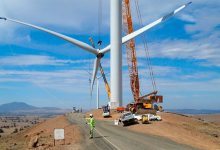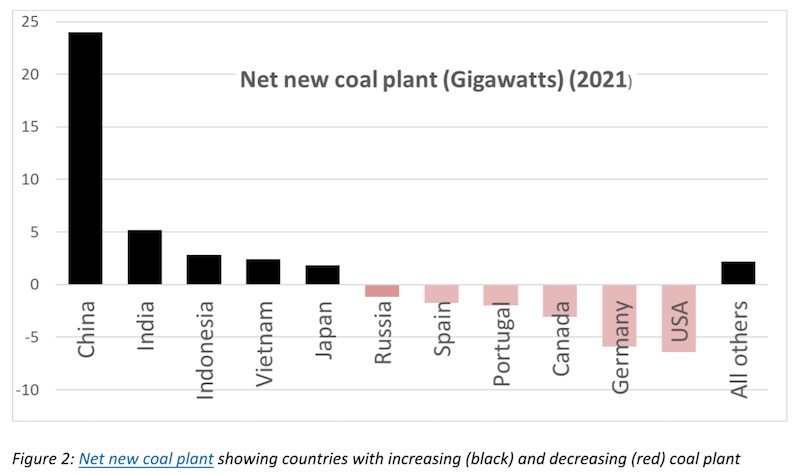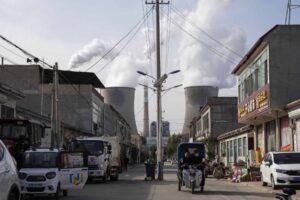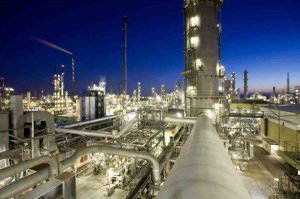In 2021, solar PV and wind comprised about three quarters of global net generation capacity additions. Adding all renewables together brings the figure to 84%.
Solar PV and wind have both reached about 0.9 Terawatts (TW) of installed capacity. They must do the heavy lifting to mitigate climate change.
Although there are supply chain bottlenecks from time to time, these are primarily symptoms of rapid growth and are soon resolved by growth in production of materials, or substitution of other materials.
Complete removal of fossil fuels from the global economy removes three quarters of global greenhouse emissions.
Energy options
Electrification of everything (transport, heating and industry), mostly via solar and wind, requires doubling or tripling electricity production, depending on the size of the chemical and metals industries in a particular country and the amount of synthetic aviation fuel required.
About 80TW of combined solar and wind is required to decarbonise the globe, which can be achieved by mid-century at current annual growth rates.
This is estimated by assuming 10 billion people each enjoy similar energy services to Australians today, including full decarbonisation via renewable electrification of nearly everything (20MWh of electricity per person per year). Land requirements are modest: 50-100 m2 of solar panels per person.
Hydro generation capacity reached 1.4 TW and new capacity is averaging 0.02 TW per year. Since the number of rivers available for damming is finite, hydro cannot be a major player in global electricity markets. However, pumped hydro energy storage has a major role to play in balancing variable solar and wind.
Global coal generation capacity is still rising slowly (Figure 2). However, excluding China, global capacity has been falling for several years as older power stations close. On a per-capita basis, China was second to Vietnam for new coal plant, while Portugal, Canada and Germany were the champion countries for closing coal plant.
Global gas generation plant is increasing and may continue to do so for many years before being overtaken by solar and wind in most countries. Gas generation in the Australian National Electricity Market has fallen to about 5% because it is expensive compared with solar and wind.
According to the World Nuclear Association, over the past decade operational global nuclear capacity rose slightly to 0.39TW and global nuclear generation declined slightly, to 2.6TWh (which is less than solar and wind combined). Thus, the nuclear industry is stagnant.
Bioenergy is a destructive form of energy generation, except when genuine waste is utilised. The poor outlook of bioenergy comes down to the miserable efficiency of biological capture of solar energy, in the range 0.1-1%, which is 20-200 times less than the efficiency of solar PV. Bio competes with food production and ecosystems for land, water, pesticides and fertilisers.
Solar thermal, geothermal and ocean energy have largely failed in the global marketplace and make trivial contributions to generation except in a few places.
Renewable leaders
Renewables capacity deployment (new Watts per person in 2021) is shown in Figure 3. Norway, Netherlands, Sweden and Australia are ahead of the pack.
Australia is the global solar pathfinder. On a per capita basis, Australia is deploying solar faster and has more installed solar than any other country.
Australia has more than 1000 Watts per person of installed solar. Not only does Australia have more solar per capita than other countries, but Australian solar energy is much better than in northern latitudes.
This means that annual Australian solar generation per capita (MWh per year) is about double that of its nearest Gigawatt-scale rivals (Netherlands, Germany, Japan and Belgium).
Australia is special. Australia is physically isolated from neighbouring countries and cannot share variable solar and wind electricity across national boundaries, unlike European countries.
Australia is learning to cope with high levels of solar and wind and is finding the task to be more manageable and less expensive than many people anticipated.
Andrew Blakers is Professor of Engineering at the Australian National University. He is a Fellow of the Academy of Technological Sciences & Engineering, the Institute of Energy and the Institute of Physics. He is a Public Policy Fellow at ANU.













